I first learned about the Instant Pot about 3 years ago, when Amazon Prime put this new-to-the-market appliance on deep discount during the first ever Amazon Prime Day. Of course, I ordered one. I wasn’t sure what I would do with this appliance, but the discount and hype around this pot were too good to pass up. Fast forward 3 years and I’m now sharing not only Instant Pot recipes on Live Simply but also how to use an Instant Pot and all the practical tips I wish I knew years ago. I’m getting ahead of myself here…
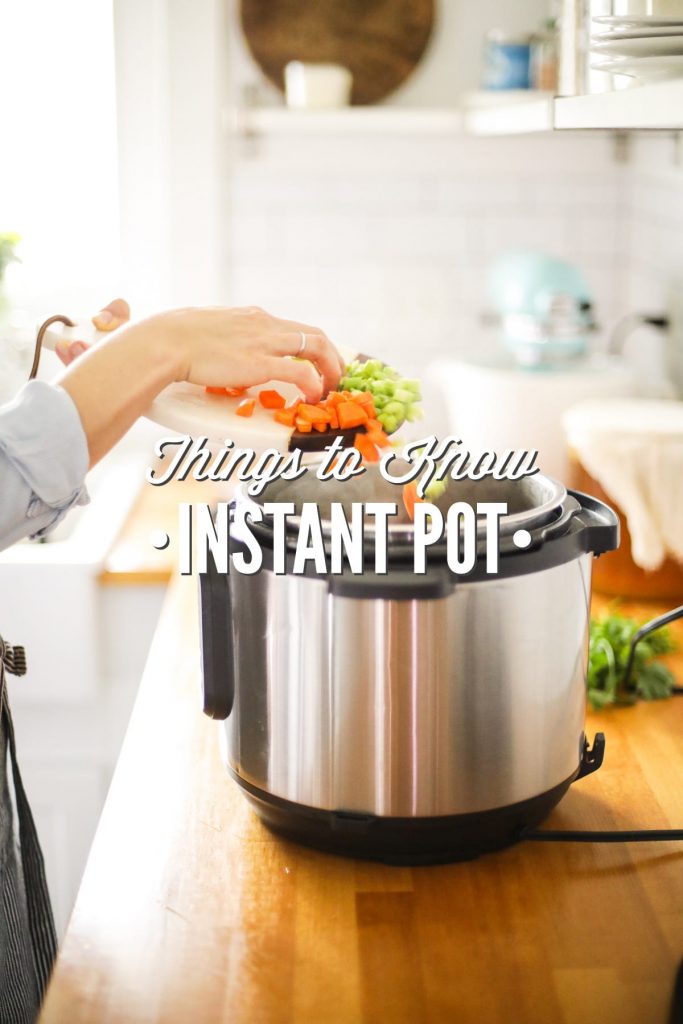
Want to Save This Recipe?
Enter your email & I’ll send it straight to your inbox. And you’ll get new recipes & tips each week.
When the box arrived, three years ago, I wasn’t exactly eager to open it mainly due to fear and not knowing what to cook in this new appliance. There weren’t any recipes online for the Instant Pot, so the box remained untouched for a long time; a year to be exact.
Helen, from the Live Simply Team, approached me a couple of years ago about sharing an Instant Pot recipe on the blog for Salisbury Steak. I figured this might be the motivation needed to use my Instant Pot since I would need to test and photograph her finalized recipe. I responded, “Sure, let’s do it!”
When it came time to test and photograph the recipe, I remember waiting for something to explode. I’m happy to report that my first Instant Pot experience was a huge success and, since that time, I’ve come to LOVE my Instant Pot.
Today, I use my Instant Pot at least twice a week. The Instant Pot has been a game-changer for me when it comes to food prep and getting weeknight dinners on the table. It hasn’t replaced cooking in the oven or on the stove-top; it’s complemented these appliances in the very best way.
As my love for the Instant Pot grows, so has the recipe collection on the blog. That said, I’ve never addressed how to use an Instant Pot. Over the past year, I’ve noticed some common questions and troubleshooting issues from reader comments on recipes, so I thought a post like this would be a good addition to the recipes you’ll find on the blog.
Instant Pot is a brand and I don’t work with or for Instant Pot. I’m in no way affiliated with the Instant Pot brand. Because of this, I recommend reading the user manual that came with your Instant Pot or consulting the Instant Pot website. This post doesn’t go into the very basics of how to turn on your Instant Pot. For that, you can consult the manual and simply follow well-written recipes (like the ones you’ll find on the blog).
What Kind of Pressure Cooker Do You Need?
What Kind of Pressure Cooker Do You Need?
I personally use a 6-quart Duo Instant Pot. This post and the recipes provided on Live Simply are based on this model and my own experience with the Instant Pot. There are several other models (and brands) now on the market, but I recommend purchasing a 6-quart model. Most recipes are developed, unless otherwise noted, for the 6-quart. The 6 quart makes a good amount of food, so you don’t need to worry about this size being too small for a family. If you want a different model, the 8-quart model is the next best option.
As for other electric pressure cookers, I only have experience with an Instant Pot. I can’t speak to other brands. I’m sure some of the general tips apply across the board, but as mentioned before, your user manual and the company website is the place to turn.
What is an Instant Pot?
What is an Instant Pot?
First, let’s address what exactly is an Instant Pot. I’m assuming you probably already have one, you’re considering a purchase in the future, or you found a bunch of Instant Pot recipes here on the blog and you’re curious to learn more.
The Instant Pot is an electric pressure cooker. It uses steam pressure to cook food (this helps food cook faster). Pressure cooking isn’t a new method or discovery (it’s been around since the 1600’s), so while an electric pressure cooker is a newer invention, pressure cooking itself has been around for a long time. The Instant Pot is also multi-functional, which we’ll talk about later, so it does more than just pressure cook food.
How to Use Your Instant Pot
16 Must-Know Tips1. Don’t fear the Instant Pot.
I’ve heard the horror stories of pressure cooking from my Grandma and Mom, but the Instant Pot is different. The Instant Pot has built-in safety features.
The safety aspect is one the reasons why pressure cooking has become so popular.
The Instant Pot is safe, self-regulating (there’s no need to worry about temperature–it’s a smart appliance), and easy to use. I know, it may not feel intuitive at first, but overtime you’ll gain confidence and experience. Just remember, there’s nothing to fear. That said, if you use the Instant Pot in a way its not intended, I’m sure it can be unsafe. Just like with anything in life.
Let’s talk about a few safety features…
- The Instant Pot cannot be opened once it reaches pressure.
- There’s a visual cue for when there’s pressure in the pot and when it’s safe to try opening the lid. The silver pin (also called the float valve) on top of the lid will rise when pressure has been reached in the pot and drop once the pot depressurizes.
- The pot doesn’t rattle like stove-top pressure cookers.
- There’s a burn notice feature on the Instant Pot, which we’ll talk about later. This is a built-in feature to keep food from burning in the pot.
- The screen on the Instant Pot takes all the guess work out of pressure cooker. Wondering how much longer the food needs to cook? Just look at the screen.
2. Perform a water test before making your first meal.
Before cooking any food in a new Instant Pot, fill the liner with water and take it for a test run. You can read more about this step on the Instant Pot’s website. This will help you gain the confidence needed to actually cook a meal. Many times, just turning on the Instant Pot is all you need to get over any fear.
3. The Instant Pot isn’t the fastest way to cook every meal.
The Instant Pot can cook food listening fast, but when you factor in the amount of time it takes the pot to come to pressure, it’s not always the fastest way to cook a particular food. The amount of time it takes for the Instant Pot to come to pressure depends on how much is in the pot and also the size of the pot (the 8-quart Instant Pot takes longer to build pressure).
For example, dry beans take about 90 minutes to cook in the Instant Pot. That’s not exactly LIGHTENING FAST. What’s the appeal?
When pressure cooking dry beans, you don’t need to soak them first. Pressure cooking makes the beans easier to digest (one of the benefits of soaking) and this method softens beans without the aid of a prior soak. Second, the beans always come out perfect, with very little human effort. Third, 90 minutes is pretty darn fast when it comes to cooking dry beans to perfection.
Large chunks of meat is another great example. A whole chicken will cook in about 30 minutes, but remember to also factor in the amount of time it takes for the pot to come to pressure and also the natural release. Still, 30 minutes of actual cooking time is impressive, particularly if you consider the hands-off nature of the entire task.
Don’t buy into the myth that the greatest appeal of the Instant Pot is always the drive-thru cooking speed. The appeal of the Instant Pot is the hands-off nature, the perfectly cooked food with very little effort, the one-pot nature of recipes, and the ability to cook many meals faster than the stove-top or oven (and definitely the slow-cooker).
4. The Instant Pot is multi-functional.
The Instant Pot can be used in multiple ways beyond the pressure cooker function. The sauté feature is my favorite function, as it allows me to build flavor in a meal without using the stove-top or separate pan. Other features include: a yogurt setting and a steam setting (both are only found on certain models). You can also use the Instant Pot to make rice and other grains. The Instant Pot also includes, in most models, a slow-cooker function. I personally don’t think the slow-cooker function is that great. That said, maybe I’m just not a big slow-cooker fan.
5. The sauté function builds flavor.
One of my issues with slow-cooking is the lack of flavor in dishes. Everything tastes the same unless you dirty extra dishes to sauté veggies or brown meats. The Instant Pot has a built-in sauté function, which I highly recommend using. Sautéing your veggies and browning meats before pressure cooking adds a depth of flavor to meals. A great example is the beef stew recipe on the blog. Notice the browning of the beef and the sautéing of the veggies? Each step builds flavor in the beef stew, and it’s all done in one single pot.
6. Always deglaze after sautéing.
The sauté function is amazing, but many people run into issues with sautéing because they leave little bits of veggies or meat on the bottom of the pot. When this happens, a burn notice usually flashes on the screen when trying to pressure cook.
Always deglaze your pot after using the sauté function and before pressure cooking. To do this, use a wooden spoon or heavy spatula and a tiny amount of liquid (water works just fine) to scrape up anything left on the bottom of the pot before adding remaining ingredients. And try to avoid letting your veggies or meat sauté so long they “burn” on the bottom of the pot.
I recommend turning off the sauté function before deglazing if you’re using some of the liquid needed for the actual recipe (for example, using a small amount of the broth/stock called for in the recipe to also deglaze the pot). This will ensure that essential liquid doesn’t evaporate from a piping hot pot, leaving you with less liquid than needed to make the recipe.
7. Quick release versus natural release
After pressure cooking (the Instant Pot will beep when pressure cooking is complete), you’ll be faced with the option to either quickly release the pressure from the pot or let it naturally release over time. Any well written recipe should specify which release should be used.
If a recipe calls for a quick release you’ll need to turn the valve (on top of the lid) from sealing to venting. Keep in mind, steam will quickly release from the valve so do this quickly and use a hot pad holder or towel. As the pressure releases from the pot, the silver pin (called the float valve) on top of the lid will drop, indicating the pot has depressurized and you can safely open the lid. Once the pot has depressurized, you’ll also notice the steam no longer exits the valve. As soon at the floating valve drops (the silver pin), remove the lid. Quick releases are performed to avoid over-cooking certain foods like vegetables. This broccoli soup recipe is the perfect example of when a quick release is needed.
Some food requires a natural release. In this case, you don’t need to do anything once the pot indicates (with a beep) cooking time is complete. Don’t touch the valve or lid. The screen will begin counting up (L: #) and will enter the “keep warm” setting. The counting up represents how long it has been since the cooking time was complete. For example, this chicken and yellow rice recipe calls for a 10 minute natural release. In this case, which is quite common for meat, wait until the screen reads L:10, then turn the valve from sealed to venting and begin releasing the remaining pressure from the pot. When a recipe calls for a completely natural release (you won’t be intervening at a 10 minute mark to release the remaining pressure), it can take between 10-40 minutes for the pot to fully depressurize–this depends on the amount of food and liquid in the pot.
8. Liquid is required to cook food.
You need at least 1 cup of liquid for the Instant Pot to reach and maintain pressure. If you feel like your food is too watery after pressure cooking is complete, use the sauté function to reduce the liquid and/or add a thickener like cornstarch or arrowroot starch. Some liquids like tomato sauce may be too dense and require some thinning. Water or broth/stock is a great way to thin dense liquids. Some recipes may call for less water, at least 1/2 cup of liquid. This is usually because the food being cooked will release water during the cooking process and add to the total amount of liquid.
9. The amount of liquid needed will vary between the 8-quart and 6-quart models.
I recommend assuming that most online and cookbook recipes, unless otherwise indicated, were developed for a 6-quart model. This is one of the reasons why I recommend purchasing a 6-quart model. With this in mind, if you have an 8-quart model, you may need to make some adjustments.
First, the 8-quart will take longer to come to pressure. Factor this in when making any recipe. Second, with the 6-quart model, at least 1 cup of liquid is needed to cook food. With the 8-quart, 1.5 cups of liquid is needed. This post from Becca at My Crazy Good Life is a great read for anyone wanting to make recipes with the 8-quart model.
10. When it comes to food made in the Instant Pot, think tender, not crispy.
The Instant Pot will not produce crispy or “crunchy” foods. An Instant Pot will not produce crisp veggies like you’ll get when roasting them in the oven. And meats, while they’ll be flavorful and tender thanks to the pressure cooking method and the sauté feature, will never have crispy skin (i.e. crispy skin on a whole chicken). The Instant Pot isn’t going to replace your oven or stove-top, but it can be a wonderful complement to these appliances.
11. Avoid the burn notice.
There are a few “tricks” or tips to keep in mind to avoid a burn notice flashing when pressure cooking. This message doesn’t mean your pot is going to catch on fire or explode. Don’t panic. This notice is a built-in feature that is designed to protect your food from burning.
There are a few reasons this notice may flash:
- not enough liquid
- the liquid used is too thick (such as: tomato sauce—it may need to be diluted)
- using cream or milk (which results in scalding)
- not deglazing the bottom of the pot (always scrape any bits off the bottom of the pan after sautéing veggies or meat)
- there’s too much in the pot (food and liquid are above the max line).
I personally haven’t encountered a burn notice. I’ve been told this notice is more common with the 8-quart model, but I don’t know if this is true or just a myth. My guess is this is caused by not having enough liquid in the 8-quart model. If you encounter a burn notice, turn off the pressure cooker function, release any pressure using the venting valve, and open the Instant Pot (once fully depressurized). Add enough water or broth/stock to scrape up the bits on the bottom and then start over with the cooking time. For more details, I recommend reading this detailed post.
12. Don’t overfill your Instant Pot.
Look inside the Instant Pot liner (the metal insert where you cook all the food). There’s a max fill line. Keep all liquids and ingredients under this line. Some ingredients may expand, like pasta and beans or grains, so only fill these ingredients about halfway to the max fill line. A pressure cooker needs headspace for the pressure to build so filling the pot to the very top won’t work well in the end.
13. Be cautious with dairy.
Dairy will curdle if added to the Instant Pot before pressure cooking. You can still enjoy dairy-based recipes, like mac and cheese and creamed soups. Always add the dairy ingredient after pressure cooking. A couple of good examples, include: this broccoli cheese soup, this mac and cheese recipe, and this creamed chicken and rice soup.
14. Check the sealing ring.
The sealing ring (found inside the lid) creates an air-tight seal between the base of the pot and the lid. Before using the Instant Pot, check the seal. Make sure it’s been placed back on the lid, if removed for cleaning. If you haven’t removed the ring, make sure it’s secure. If you notice steam leaking from the sides of the Instant Pot during cooking, you probably have an issue with the ring—it’s either missing or needs to be secured. The sealing ring naturally expands during the cooking process, but as it cools it should return back to its original state. I haven’t replaced my sealing ring (and I’ve been using my pot for a few years now), but you can purchase replacement rings, if needed.
15. The sealing ring can trap food odors.
If you cook anything with a large amount of spices or even something simple like garlic, you’ll probably notice the sealing ring retains the odor of the food. It’s just part of the Instant Pot experience. I haven’t found the odor to transfer to other foods, but the leftover food smell of the sealing ring can be unpleasant when storing the pot. You can buy replacement rings, if needed.
16. Start with tested recipes, then experiment on your own.
The Instant Pot does take some getting used to. It’s not intuitive at first. I recommend starting with some tested recipes online or from cookbooks. There are a bunch of recipes here on the blog and more to come. As you cook from these tested recipes, you’ll begin notice trends (such as when meat is added to the pot, how to use the sauté function, when a quick release is needed). As you notice these trends, you’ll gain the confidence and knowledge needed to experiment on your own. If you’re brand new to the Instant Pot, I think eggs are a great place to start.
Instant Pot shares cooking times and liquid to dry ingredient ratios for many basic foods, like rice and pasta, on their website. So if you’re looking for more Instant Pot basics versus meals or recipes, that’s a great resource to check out.
The Best Foods to Make in the Instant Pot
The Best Foods to Make in the Instant Pot
I’ve gathered all my favorite foods to make in the Instant Pot in one place. You’ll find all the recipes here. This is a great place to turn whether you’re new to the Instant Pot or just looking for new recipes to make using your Instant Pot.


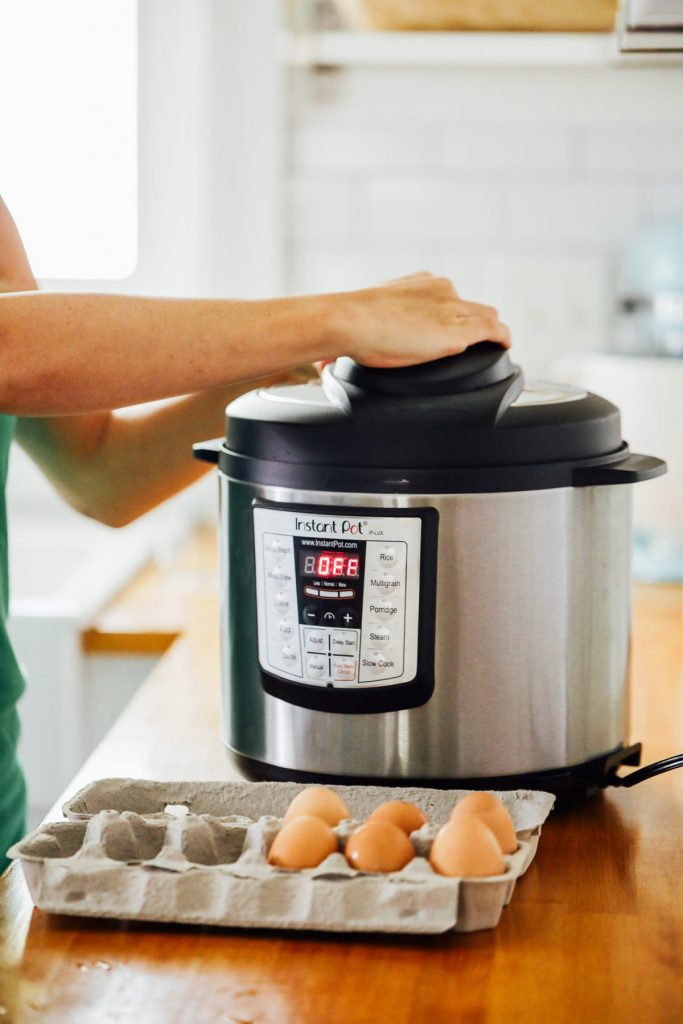
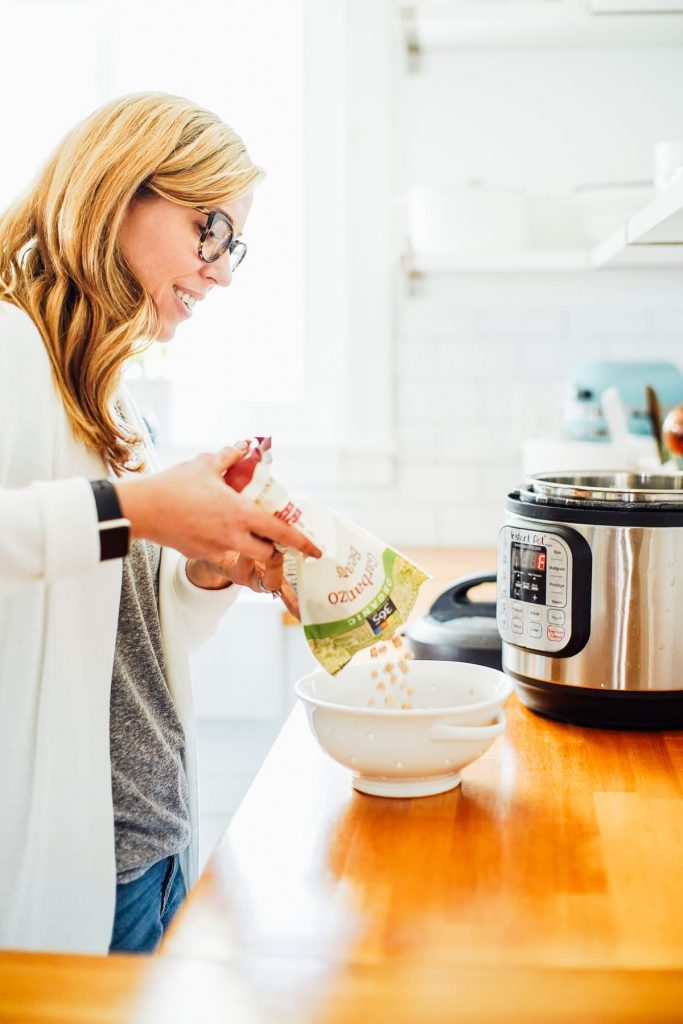

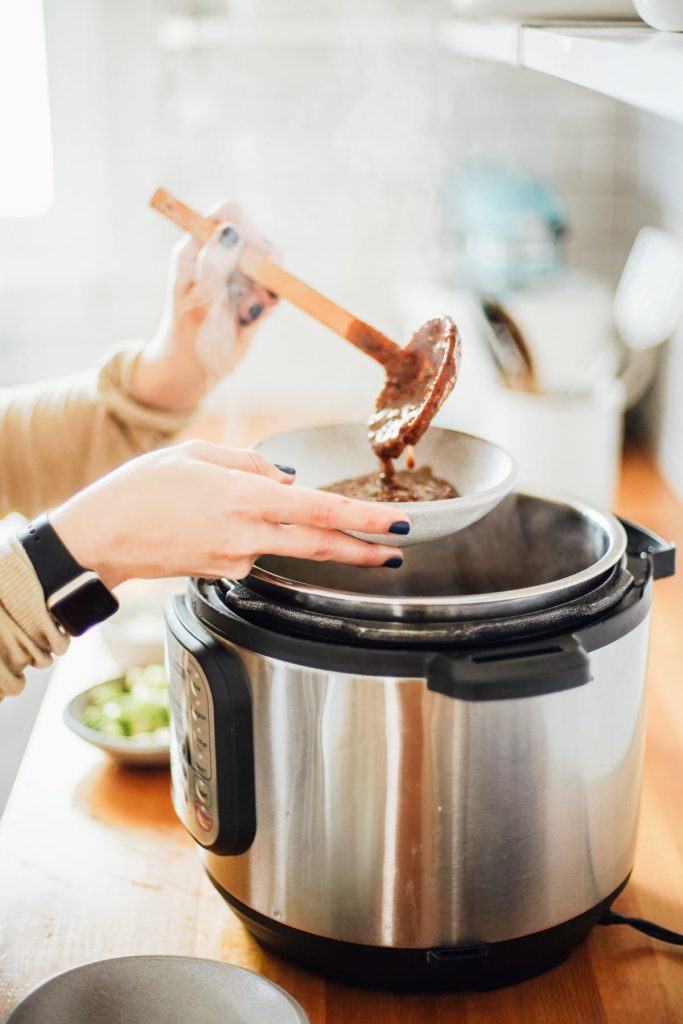

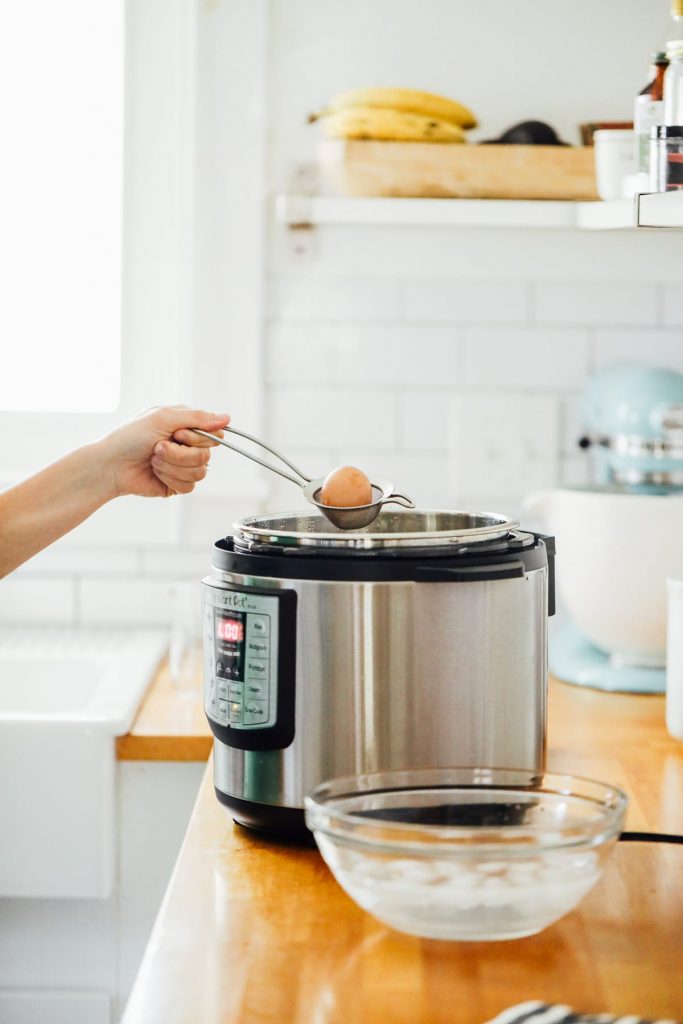
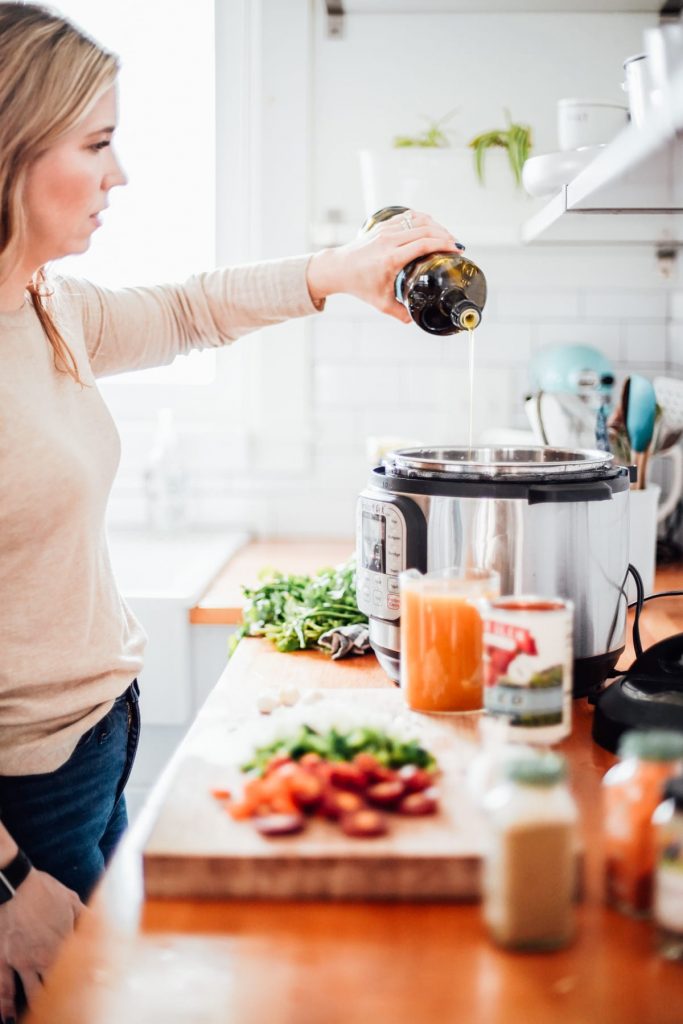
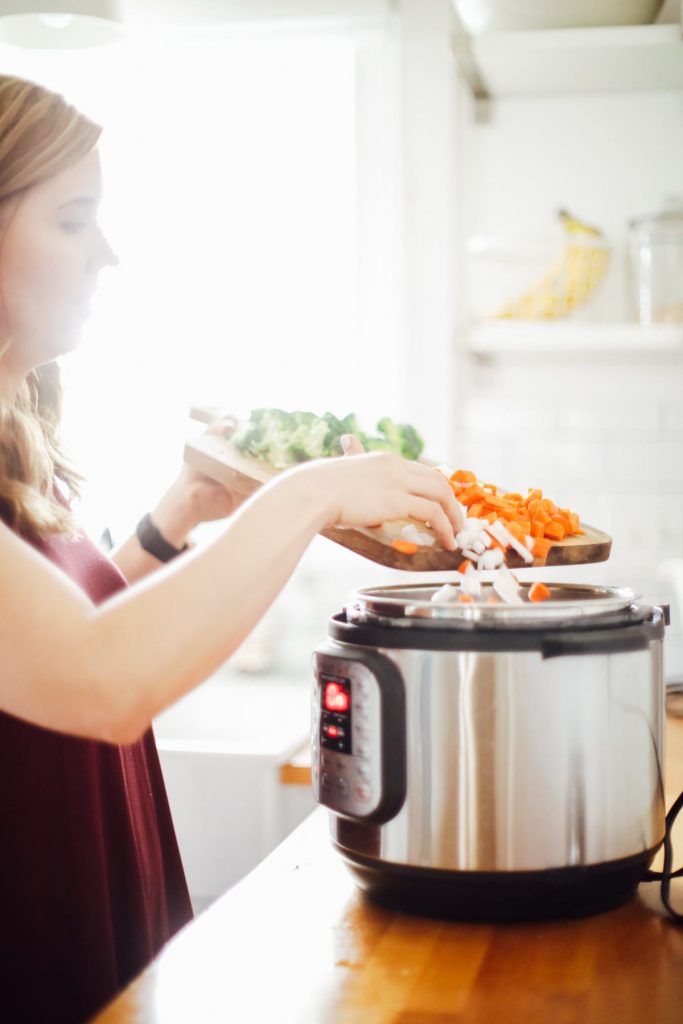

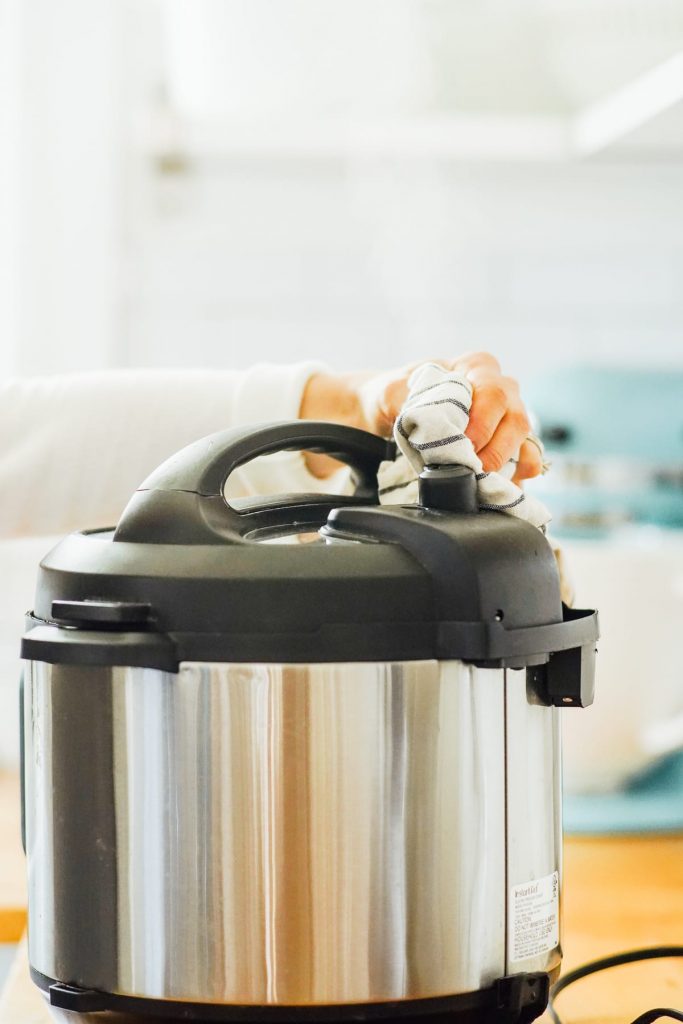
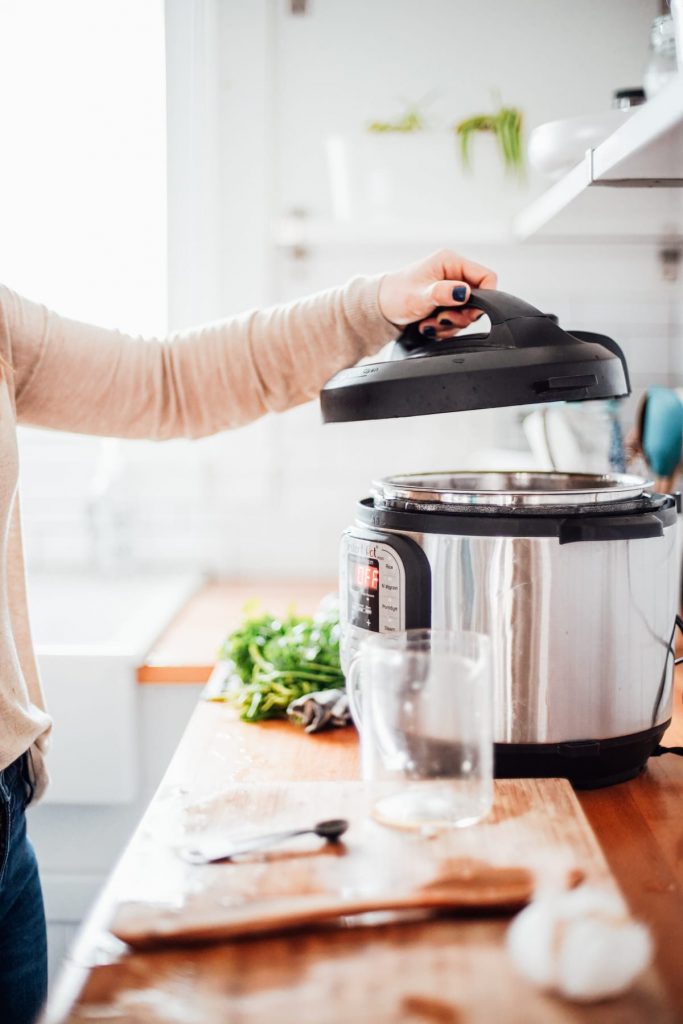
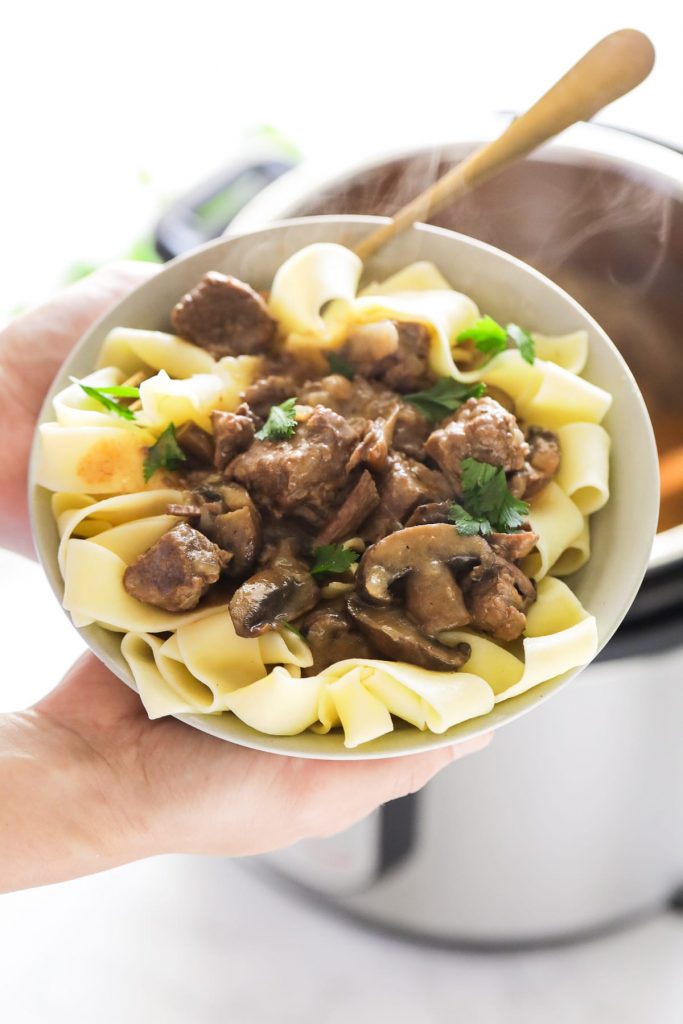
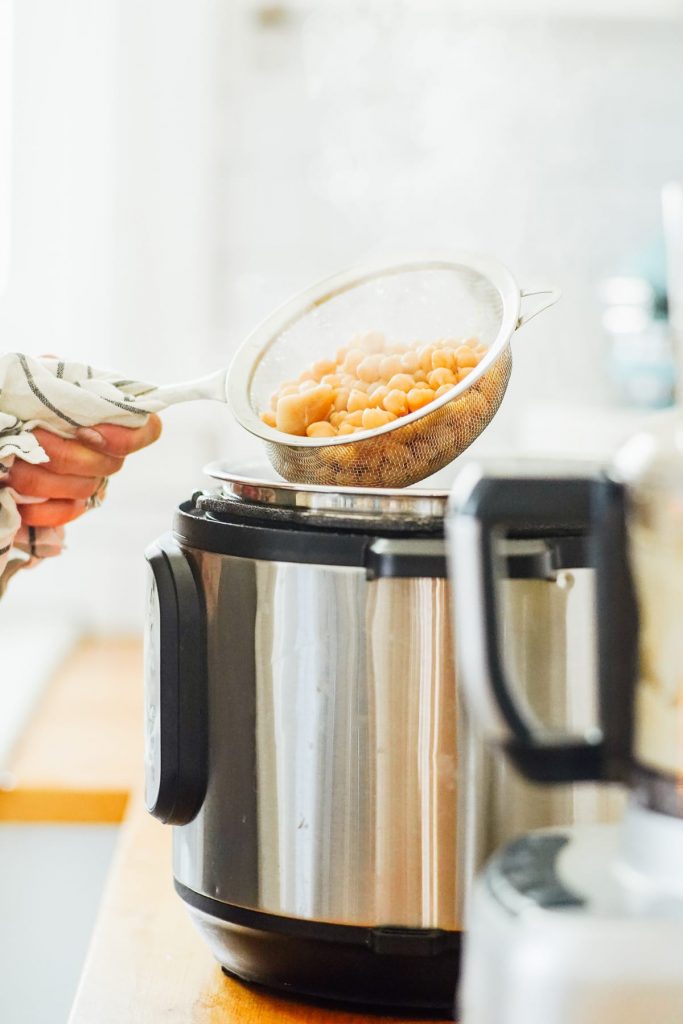
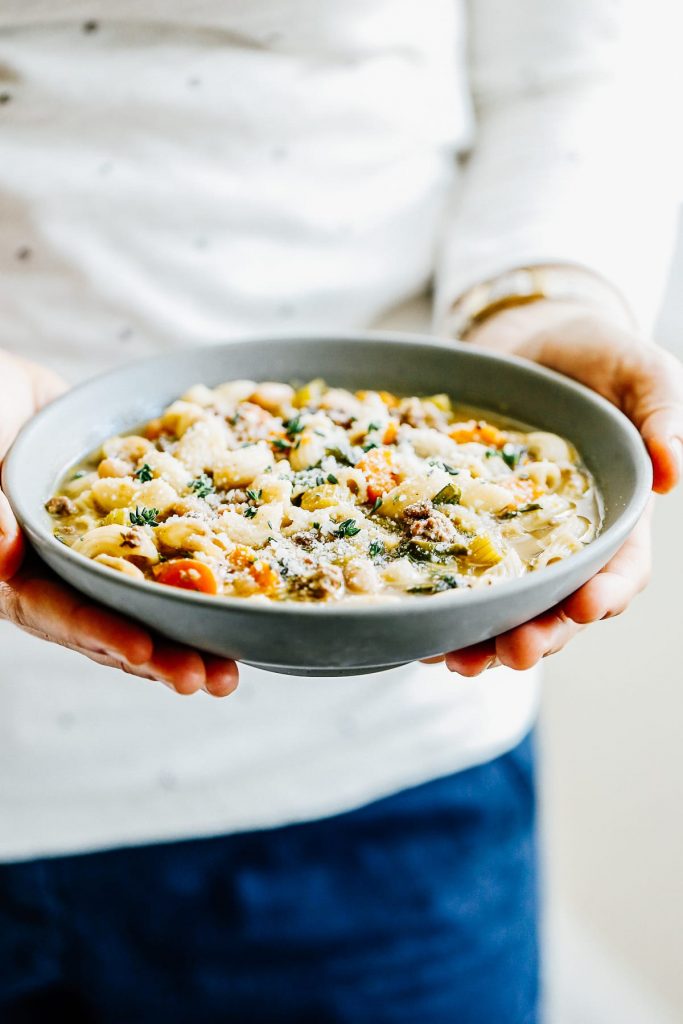

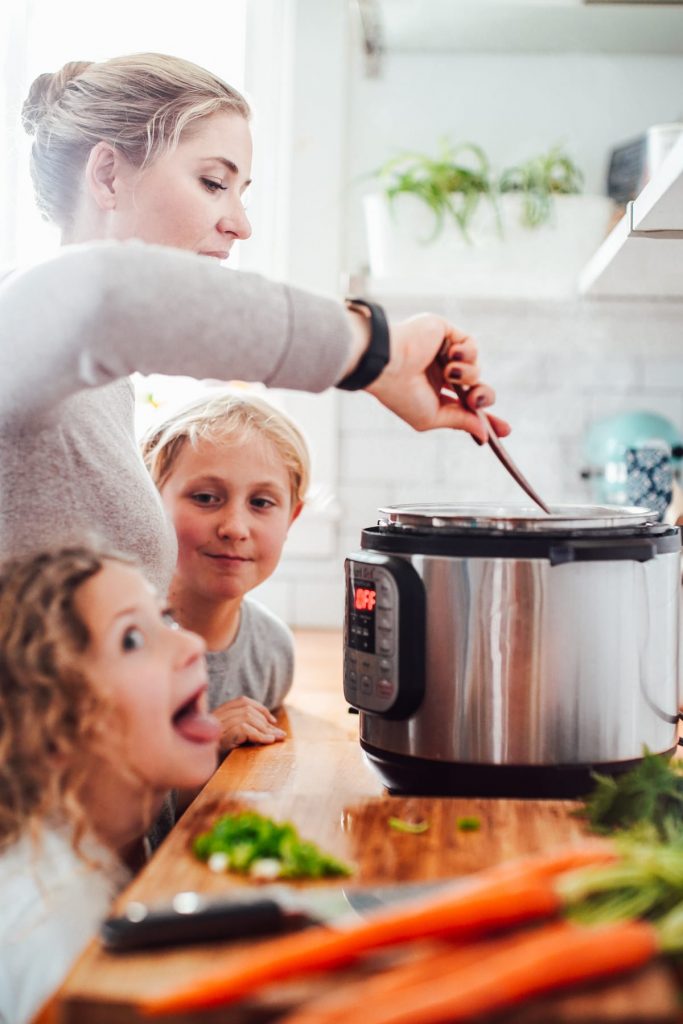
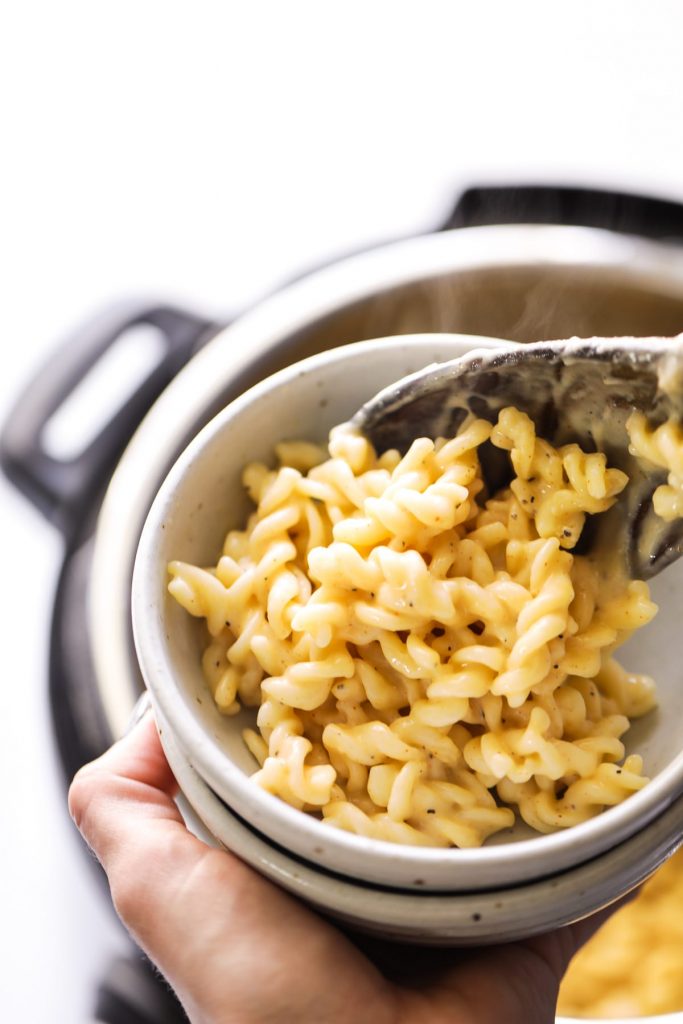
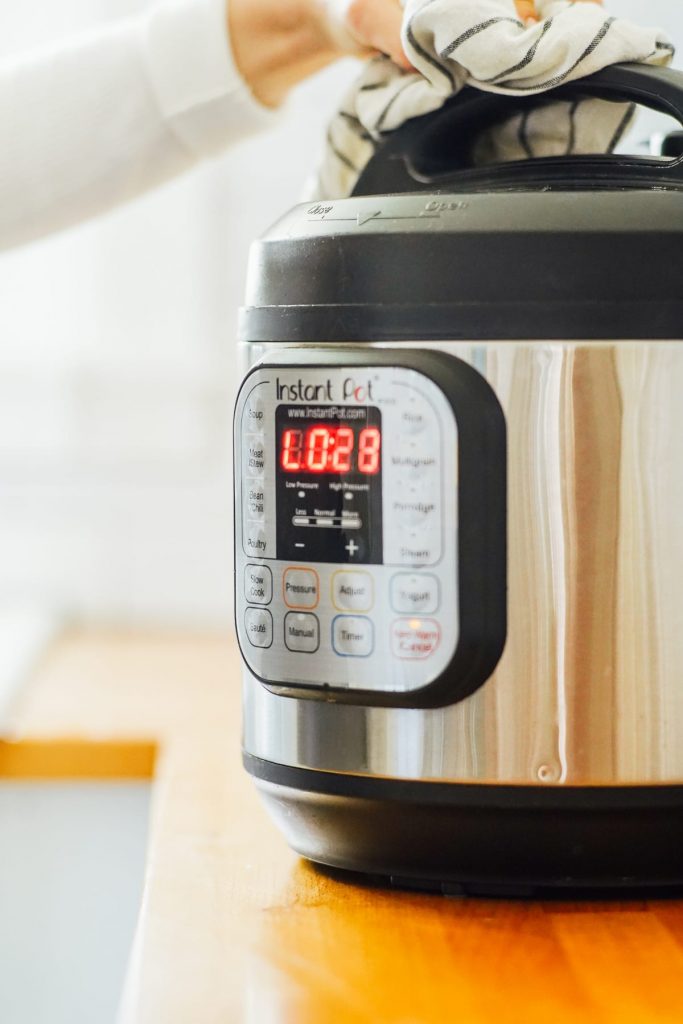
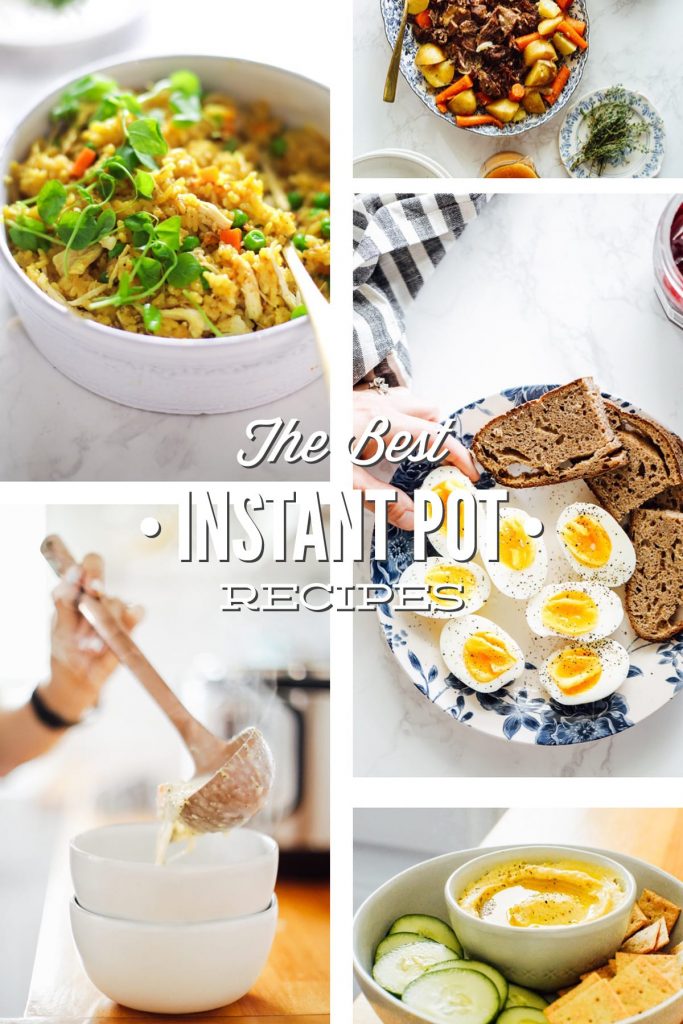
Very helpful!
Thank you for sharing! So helpful!
What are the most handy accessories for instant pot? If I make something that requires pasta, will the pasta be too soft?
Hey Cheryl, It depends on what you what to make in your Instant Pot. For me, the only extra item I use is the trivet that came with the Instant Pot for making eggs. For pasta, as long as you base your cook time on the pasta (this is generally half the time it takes to make it on the stove-top), the pasta won’t be too soft.
I’ll look into one of these. Sounds interesting.
My parents gave me a slow-cooker / crock pot when I was working as a nurse. It was great! I would put everything, esp. lots of good veggies, wonderful herbs and spices, in before I went to work and by the time I got back home, usually feeling quite tired from working my shift, a delicious, nutritious meal would be ready for me. And there’d be enough for another meal.
It was one of the BEST gifts I’ve ever received. Thank you Mom & Dad.